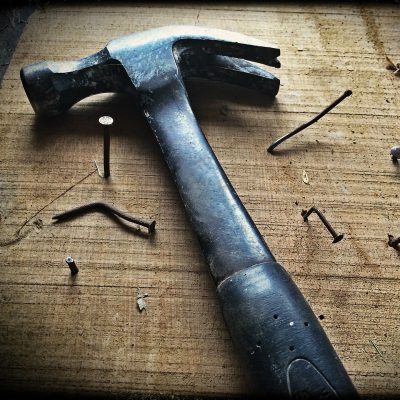 Sameer Patel loves to DIY. He’s built a weight rack for his home gym, rebuilt a swing for his son and welded a fire pit for his backyard. So when it was time to add gutters to his home in Tucson, Arizona, he was ready to do it himself.
Sameer Patel loves to DIY. He’s built a weight rack for his home gym, rebuilt a swing for his son and welded a fire pit for his backyard. So when it was time to add gutters to his home in Tucson, Arizona, he was ready to do it himself.
“I had gone to Home Depot, read a lot of posts and was determined to do this myself,” Patel says. But the numbers didn’t add up.
Patel estimated tool rentals and materials (overestimating for the inevitable mistake) would run $652, still under the $800 quoted to him by a local contractor.
But when he factored in time — the project would take an entire weekend — and the likelihood he’d reuse his newfound gutter knowledge, he called in a professional.
“Even though I’d save money with this project … I was never going to do this” again, Patel says. “I don’t plan on starting a gutter install business.”
When weighing your own DIY project, run the numbers, then ask yourself these four questions before deciding whether to invest the elbow grease or pass it off to a professional.
1. How complex is the project?
Installing a new kitchen backsplash is a relatively straightforward task. A good online tutorial will teach you the basic techniques and walk you through the supplies needed.
A top-to-bottom remodel of your kitchen is another story. You’ll need to plan for and install flooring, cabinets, countertops and appliances, and may need to move gas and plumbing lines. That’s a lot of moving parts, especially for novices.
“When it gets to be more complex, it’s always good to have someone who is overseeing the project,” says Kelly Barrett, senior vice president of home services at Home Depot. That’s when it pays to hire a professional.
2. Do you have the skills?
Sewing, carpentry, painting, metalwork: Each project requires a unique set of skills. Not having them isn’t a deal breaker, though. Half the fun of DIY is learning something new. Patel taught himself to weld so he could build his family a fire pit.
“It was fun sourcing the metal, developing a model, cutting and welding it,” Patel says. “The best part is the story about how it was made, knowing the mistakes and fixes and how we’d do it better next time.”
Before tackling a new project, Patel assesses his skill set, figures out how easily he can learn any new skills, and factors in how often he’ll use his new knowledge. If it’s a skill he won’t reuse, he’s less likely to do the project himself.
3. What are the risks?
How much damage could you do if your DIY project goes awry?
Craft projects are less risky. Sure, you may burn your thumb with hot glue, but you won’t burn the house down. But some home improvement projects could flood your home or endanger your life if not done correctly.
“Make sure you’re safe,” says Brittany Bailey, a licensed general contractor and DIY educator at Pretty Handy Girl. “If you’re taking out a load-bearing wall and don’t know what you’re doing, that’s risking your life, your family’s life.”
4. What’s your time worth?
Put a dollar value on your time and factor that into the total project costs. R.J. Weiss, a certified financial planner, uses this formula: Total savings divided by hours needed to complete the project.
“Now, I know my hourly rate for completing the project. Then the question really comes down to, am I willing to do the work for that amount of money,” Weiss says. “For projects I actually enjoy doing, such as yardwork, this point is moot. However, for those I’d grind my way through, it’s important to recognize the true opportunity cost of going the DIY route.”

 Highland Bank—Member FDIC
Highland Bank—Member FDIC